- The TTC promises to relieve overcrowding on its subways and buses, but isn't going to actually spend enough money to trigger significant change for a couple of years. CBC reports.
- Ben Spurr reports on the frankly embarrassing failure of the TTC--Metrolinx, anyone--to have any sort of technological infrastructure capable of checking up on the Presto cards and the gates they use.
- Edward Keenan takes issue, rightfully, with the failure of city planners in Toronto to plan ahead for crises, counting on the false security of assuming things will go on as they have gone in the past, over at the Toronto Star.
- The Toronto District School Board is considering allowing school trips to the United States in the era of Trump. The Globe and Mail reports.
- Shawn Micallef raves about the power of light on a winter night, taking an extended look at Ontario Place's Winter Light Exhibition. I must get down there. The Toronto Star has it.
- Jenna Moon talks about her experience living and loving in a Church and Wellesley that is starting to feel dangerous, over at the Toronto Star.
- Toronto Life notes the lights of the Winter at Ontario Place festival, transforming the west island into a fantastical array of shapes at night. I must go see it.
- Toronto Life profiles Nations Experience, an immense supermarket in the former Target Canada space in the Junction's Stockyards that looks to be as much a tourist attraction as a store.
- One Toronto condo owner is interviewed criticizing the new restrictions on Airbnb. (I wonder what his neighbours think.) The Toronto Star reports.
- In Kleinburg, in Vaughan region, the definition of "detached home" has been rewritten to better enable development. The Toronto Star reports.
- blogTO notes that Kodak Building 9 has been moved, to serve as part of the Mount Dennis station on the Eglinton line.
- Toronto police are now fining drivers on King Street who are not respecting new transit-friendly policies there. The Toronto Star reports.
- A new study estimates that the proposed Rail Deck Park would cost the city of Toronto 1.6 billion dollars. (I think it's worth it.) Global News reports.
- blogTO reports on plans for a massive new park at Ontario Place, Celebration Commons, some twenty acres in size.
- Torontoist's Historicist takes a look at the issue of improving the grave of William Lyon Mackenzie in the 1930s.
- Norman Wilner celebrates the newly reopened Cinesphere, down at a reenergizing Ontario Place.
- Alex Bozikovic celebrates the beautiful new renovation and expansion of HIV/AIDS hospice Casey House.
- John Lorinc notes the many potential problems with the investments of Google's Sidewalk in Quayside.
- Vjosa Isai celebrates the 30th anniversary of a mural that helped name, and give shape, to Leslieville, over at the Toronto Star.
This post, last of my four from Ontario Place, shows some of the things I saw heading east back to the mainland of Toronto, past the architecture of Ontario Place and along the William C. Davis Trail i Trillium Park. The views this trail offers, of the Toronto skyline and of the Toronto Islands, are unparalleled.
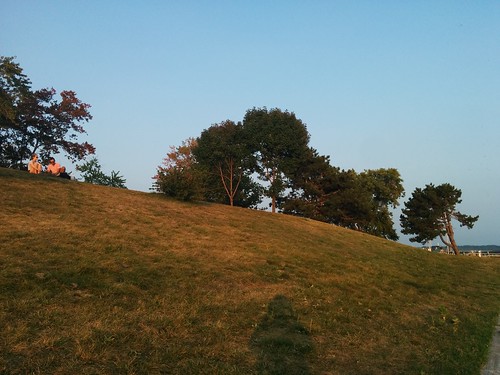

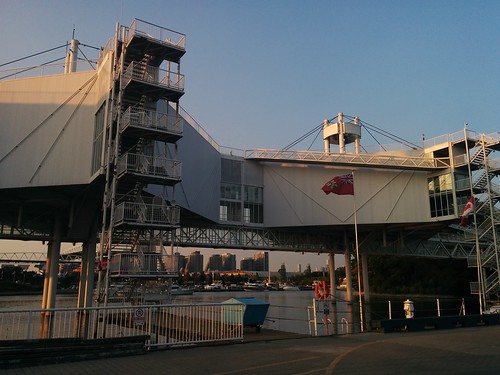

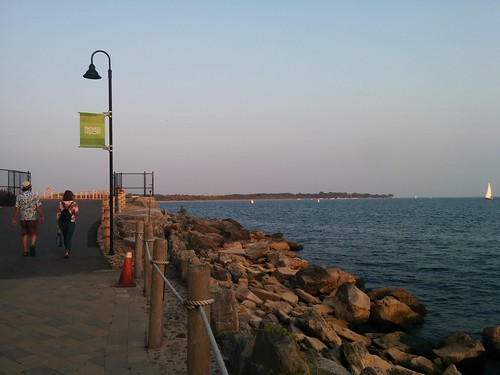
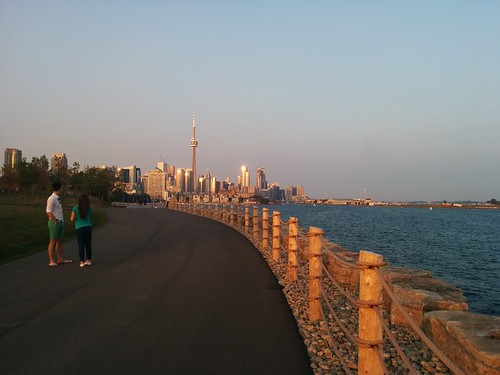

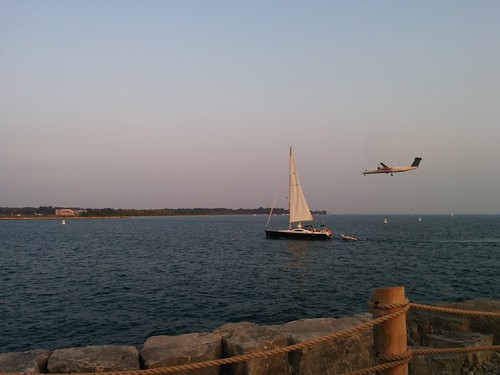
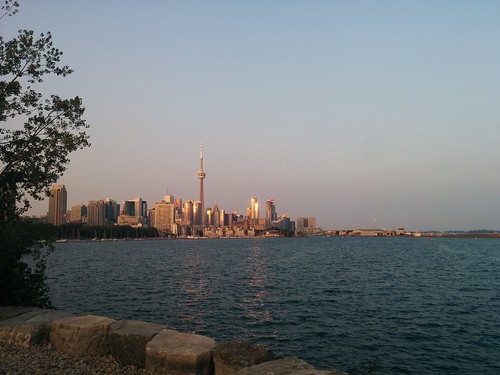

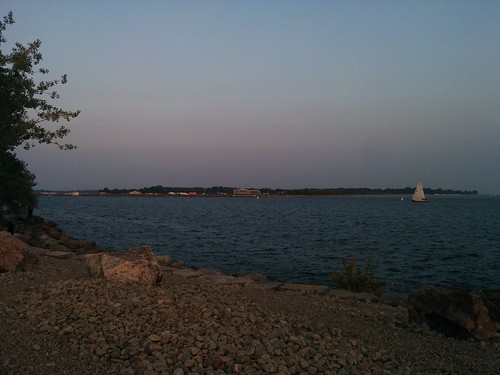
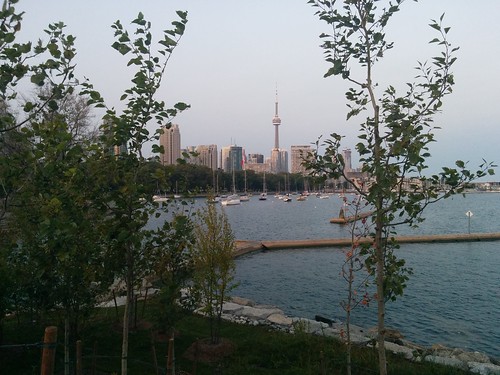












Back on the 21st of September, I posted a series of photos that I took just east of Ontario Place, in the area of the new Trillium Park. I had continued exploring west of Trillium Park, into Ontario Place, but I had never gotten around to posting my photos of Ontario Place in all of its mid-20th century modernist grandeur.




















There will be more photos tomorrow.




















There will be more photos tomorrow.
The newly-opened Trillium Park and William G. David Trail, part of the ongoing redevelopment of Ontario Place, is superb. Though the landscaping is still raw, just three months after the parks opening, the bones are good ones. Walking along the trail on a beautiful warm evening, seeing the park full of people enjoying the grass or the concert or the views of the lake and the Toronto Islands, I knew this park is a success.


























- Spacing notes how mapping can reveal the extent of flooding on the Toronto Islands.
- blogTO reports on Boblo Island, home to an amusement park abandoned more than two decades.
- At NOW Toronto, Richard Longley describes the wonderful scenic new Trillium Park, built on the former Ontario Place grounds.
- Global News notes how Mississauga is planning to buy old homes in Cooksville to convert into a new central park.
- Caroline Alphonso reports in The Globe and Mail about how Toronto Islands students have been displaced to school on the mainland, in Regent Park.
- Robert Benzie and Victoria Gibson describe in the Toronto Star a new waterfront park in a revitalized part of Ontario Place.
- Torontoist's Keiran Delamont notes how Metrolinx's sharing of data with the police fits into the broader concept of the modern surveillance state.
- Steve Munro tracks the evolution, or perhaps more properly devolution, of streetcar service from 1980 to 2016.
blogTO's Derek Flack reports on the exciting plans to renovate Ontario Place in time for next summer.
There's life at Ontario Place. Aside from the peek that we got at the dilapidated grounds for the in/future festival, there's been little news about the site's future outside of delays to the opening date of the urban park that will make up phase one of the revitalization efforts.
Provincial representatives gave tours of the construction site today, which is slowly starting to reveal the shape of the park to come. The new opening date is now pegged at next summer, a more realistic goal based on the amount of work that's been done thus far (the original target for phase one was 2015).
The 7.5 acre waterfront park will have a variety of features when it opens to the public, including granite rock faces that'll provide skyline views, a central fire pit, a waterfront trail, a boardwalk and an open-air pavilion. It all looks very promising, even as the rough outline is only coming into view now.
The Toronto Star's Kristin Rushowy reports from Queen's Park. We are indebted to the NDP for keeping track of this potential threat to Ontario Place.
The NDP is raising alarm bells after discovering that Ontario Place lands could be sold off under a little-known section in an upcoming bill meant to cut government red tape.
And while the tourism and culture minister cannot explain why it’s included in Bill 27 — the Burden Reduction Act — she was firm the government has no intention of getting rid of property at the cherished waterfront site.
“It’s there, I don’t know why it’s there, it’s there,” Eleanor McMahon told reporters at Queen’s Park. “I can tell you we’re not going to do it … I will say it one more time in case you missed it, we are not selling Ontario Place.”
But NDP’s GTA affairs critic Cheri DiNovo called the change a “poison pill” hidden in the omnibus bill, and wondered why the power will be granted if there are no plans to use it.
The bill allows Ontario Place to “dispose of land, buildings and structures, or any interest in land, buildings and structure, by sale, lease or otherwise.”
“This sounds ominous,” DiNovo (Parkdale-High Park) said at a press conference held at Queen’s Park with Toronto City Councillor Mike Layton (Ward 19 Trinity-Spadina) and urban planner Ken Greenberg of Ryerson University.
The Globe and Mail's Alex Bozikovic writes about the issues involved with reviving Ontario Place. Why, for starters?
The couple looked as confused as we were: He in a navy-blue two-piece and she in a red skirt suit, while our crowd donned skinny jeans, canvas totes and New Balance. As we all arrived at Ontario Place, it became clear we were here for different purposes: us for the In/Future festival of arts and music, and them for a wedding.
In the modernist fantasy land on Toronto’s waterfront, which opened in 1971, the wedding guests seemed a bit out of place. Ontario Place was designed as a gleaming showpiece for the province’s culture, but that vision collapsed; today the site, which ended up as a theme park, is largely closed. The wedding venue, meanwhile, is doing good business.
Ontario Place was the product of grand modernist dream, built on a futurist ambition of social progress.
It was a powerful lesson about what makes public space work: You have to give people a reason to come. And In/Future, which wrapped up last weekend after a highly successful 10-day run, did just that: a set of art installations and music performances that brought one of Ontario Place’s two artificial islands to life.
And that is a difficult task: How do you take a big and slightly isolated place, the product of a grand modernist dream, and make it live again?
The curators of In/Future, Rui Pimenta and Layne Hinton, asked artists to engage with the landscape – designed by Michael Hough as a rolling park stocked with native trees and shrubs – and with the architecture, envisioned by Eberhard Zeidler, with its spherical cinema and series of high-tech white steel structures. “What do we learn about ourselves in the present,” Hinton asks, “when we look at the past, to see how we imagined the future?”
Torontoist features Beatrice Paez' lovely photo-heavy feature on In/Future and its Ontario Place site that makes me wish I could have visited it this year. Maybe next year?
Ontario Place opened to much fanfare in 1971, hailed as an icon of the province’s progress. Decades later, its stature in the city’s consciousness has since faded. In/Future, the much-hyped arts and music festival, hopes to bring Ontario Place back onto the public’s radar after a long hiatus.
More than four years ago, Ontario Place temporarily shuttered its doors with an eye to recasting itself as a multi-purpose site. It will reopen in 2017.
Rui Pimenta and Layne Hinton are the creative conspirators behind In/Future, which sets the stage for the park’s return from irrelevance. The festival opens the grounds to artists and musicians to project their take on how the site might appeal to a broader audience—beyond those prone to fits of nostalgia.
As much as it reimagines Ontario Place’s potential, In/Future also takes a retrospective gaze through several site-specific installations. With “Still,” artist Max Dean’s photographic installations offer up a narrative constructed with the props and mannequins salvaged from the out-of-commission Wilderness Adventure Ride. The inanimate objects—moose, bears, and miners—reassemble themselves into a tableau, continuing to take up residency in the deserted complex.
More futuristic is Laura Millard’s “Recursive Traces,” which displays images of snowmobile-etched circles, captured using a drone. Against the backdrop of her illuminated sketches and Styrofoam icebergs, Philip Glass’s “Étude No. 1” is played on loop. The piece is performed by Millard’s collaborator, Simone Jones.
Phil Villeneuve's photo-heavy blogTO post has convinced me: I will be going to Ontario Place tomorrow.


Ontario Place lives again. The defunct amusement park has been resuscitated this month as part of a massive art project that will reanimate the site's previously dormant features like the Cinesphere and silos.
The in/future arts and culture festival launched last night and will run until September 25. Spread out over 14 acres, it's truly a feast for the eyes, ears and belly (there are food trucks and bars scattered all over the property).
Toronto art curators Art Spin together with dozens of artists and art organizations worked together to populate the abandoned island with all types of activations. It's best to head down over the iconic bridge in the afternoon to appreciate things in the daylight before they light up at night. The festival is open until 11 p.m. every night.
Memories will come rushing back from the minute you enter the main pavilion. If you had never been as a kid, you'll be hit with a different kind of rush, and that's one of strolling onto another planet.
NOW Toronto's Kate Robertson reports on how Ontario Place was brought back to life.
What do you do when you have less than 12 months to plan an enormous music and art festival?
That's the question Rui Pimenta and Layne Hinton of Art Spin bike tours faced when they got the green light to host In/Future on Ontario Place's largely abandoned West Island.
"Immediately realizing the scale of it, we started reaching out to creative partners," says Hinton.
Not that it was their first rodeo. Curators Pimenta and Hinton had taken 300 or so people to the site last summer for one of their art tours, so they were on familiar territory. And since 2009, Art Spin has commissioned artists and musicians to create site-specific works in some of the city's unlikeliest pockets, from rickshaw residencies to a pit behind the Tower Automotive Building on Sterling Road. Participants pedal in a mass ride to each installation or performance.
But now they had 14 acres to program with a small team and an even tinier budget, so they knew they needed help. Pimenta contacted the Small World Music Festival, a world music fest now in its 15th year.
"We were so excited by the site from our early visits, we felt the best way to do this was to bring potential partners on site for visits," he says. "Once they saw it, they were either convinced or they weren't. If they were, they started presenting ideas for what they would want to do and where they would want to do it. So things unfolded very organically that way."
I'm entirely in favour of this, as reported by James Adams in The Globe and Mail.
The site, opened in May, 1971, after more than two years of construction, was the brainchild of Ontario’s Progressive Conservative government which, like the rest of Canada, had been enamoured of what Montreal had wrought on the St. Lawrence River with its fabled Expo ’67. The Tories were keen to have something equally far-out and futuristic for Toronto and Ontar-i-ar-i-ar-i-o.
Funny thing about the future, though: it gets old; it gets scuffed; it gets weedy. Or at least its emblems do. What once seemed the very incarnations of the future – at Ontario Place, this would be the geodesic Cinesphere, the pods-on-stilts structures on the centre island and the diamond-shaped pavilions on its west island – become, over time, the fodder of nostalgia, saying more about the era in which they were conceived than what they seemed to portend.
Which perhaps, in part, explains why, after additions and fixes, including a $10-million refurbishment in 2010, then sundry redevelopment and enhancement proposals, Ontario’s Liberal government closed Ontario Place in February, 2012, and punted its future into, well … the future.
Now, however, the site appears on the cusp of a mini-revival, or at least the six hectares that make up the complex’s western island are. Beginning Sept. 15, the former amusement park site is going to host the first In/Future art festival and the 15th annual Small World Music Festival.
A symbiotic exercise, the dual festival is set to run over 11 days and feature at least 60 art installations, indoors and out, plus more than 45 performers appearing in concert and wandering the locale.
[PHOTO] Towards Ontario Place
Jul. 14th, 2016 09:22 am
Ontario Place looks, from this vantage point in Marilyn Bell Park and under the gaze of my imaginative eye, almost like some sort of lost island.
blogTO and Torontoist each report on a planned park in the area of Ontario Place, one apparently designed to evoke Toronto's First Nations past.
From the first link:
From the first link:
The serpentine strip that's being turned into a new waterfront park runs from the foot of Ontario Place Blvd., down the back of Echo Beach, and out round the back of the old water slides. When the park was open the area was used for parking and equipment storage.
In January, the province and Waterfront Toronto, the two groups leading the development of the park, called for public feedback on their latest draft. The suggestions, gathered over the last three months, called for improved connections to the water and better recognition of local First Nations heritage.
Many of the people that provided input said they wanted the as yet unnamed park, which is made up of areas that sound like levels in a Sega Genesis video game, to include multi-use trails, space for food trucks and other public events, and forested areas. Facilities should be geared towards walking, cycling, and hiking, they said.
As it currently stands, visitors will enter the park through an artificial ravine, which was not included in the previous incarnation of the park. On the rocky walls, carvings will use patterns and textures from traditional First Nations moccasins; overhead, a part of the looping park trail crosses the ravine on a suspension bridge.
A looping, 980-metre multi-use trail will pass through the upper portion of the park, which contains high hills and forest, and a waterfront boardwalk with public seating and rocky outcrops that protrude from the beach into the water.
There are some nice touches: Some trees will be planted and grown in deliberately unusual shapes as visual landmarks and fire pits will be allowed - encouraged even - on a rocky section of beach with panoramic views of the city skyline. There's even a "romantic garden" for being romantic and a lookout for looking.
I've blogged a fair bit about the fate of Ontario Place, a waterfront publically-owned amusement park that, in the wake of dropping attendance, has been closed down while a plan for the site's redevelopment is composed. Toronto's Jamie Bradburn reports on the latest iteration of planning, which apparently amounts to another round of discussions.
A year after the provincial government closed Ontario Place, the site’s future is still up for debate. While the recommendations of the official report issued by John Tory’s advisory panel last July continue to be reviewed, a group of architects, designers, and urban planners has devised an unofficial alternative vision for revitalizing the former amusement park. It’s called “Rethinking Ontario Place.”
Monday night, during a two-hour session at Innis Town Hall, residents and experts met to talk about that alternative vision. The basis of the discussion was 12 recommendations developed at a December design charrette, co-hosted by the Design Industry Advisory Committee, the Martin Prosperity Institute (MPI), and the Ontario Public Service Employees Union (OPSEU).
MPI research director Kevin Stolarick outlined each recommendation before handing the floor over to two panels: one devoted to urban design, the other devoted to critiquing the charrette’s ideas.
The overall vision to come out of the charrette was equal parts faddish ideas (innovation centres for research and business incubation), heritage preservation (restoring the existing buildings), nostalgia (bringing back the Forum and the free festivals and cultural programming it offered during the 1970s), improved infrastructure (better cycling, pedestrian, and transit links), and opposition to a casino at Exhibition Place. A key point that everyone agreed on was that the redevelopment process needs to be slowed down before any rash decisions are made.








